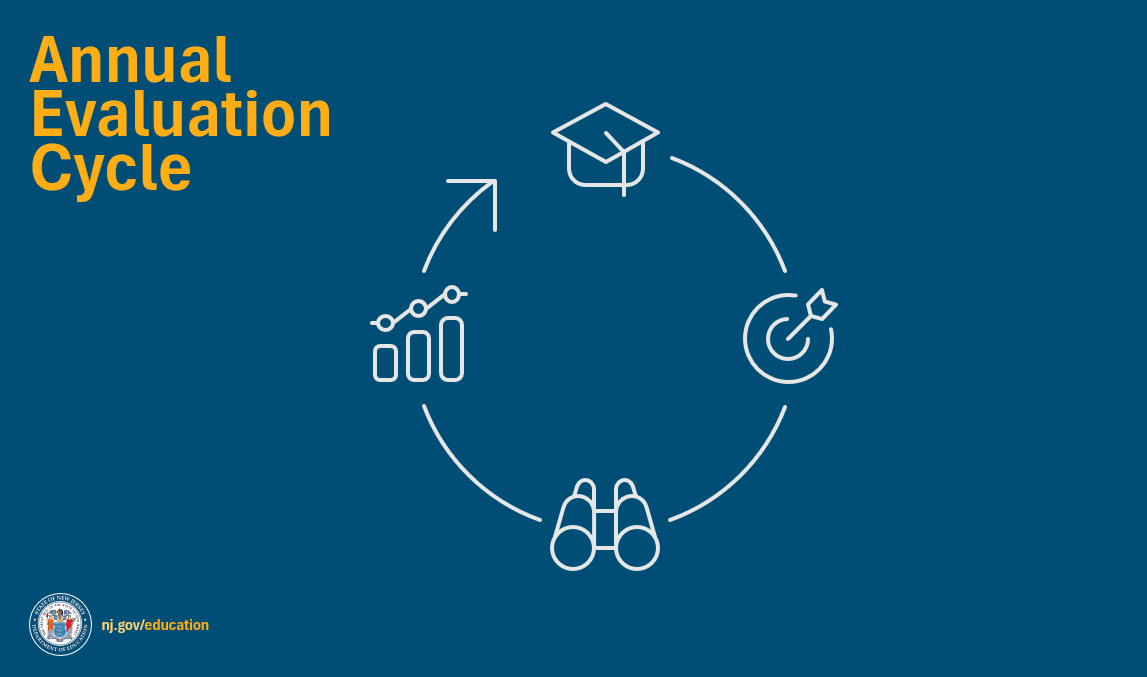Educator Evaluation Guidance: Flexibilities and Best Practices
Educator evaluation regulations (N.J.A.C. 6A:10) provide districts with significant flexibility, enabling them to tailor their evaluation systems to meet both local and individual needs. When thoughtfully designed, the evaluation cycle, grounded in data-informed planning and intentional alignment of required goals and observations, can meaningfully support educator growth and ultimately enhance student learning.
This guidance is intended to help districts customize their evaluation systems by:
- Framing evaluation as a collaborative process that fosters ongoing, meaningful dialogue about teaching and learning;
- Leveraging statutory and regulatory requirements and flexibilities in ways that enhance the instructional value of the system;
- Streamlining processes to minimize administrative burden; and
- Elevating the professional learning opportunities embedded within the evaluation cycle, thereby promoting transparency and a shared understanding of its benefits.
Organized according to the natural progression of the school year, this guidance highlights key points within the evaluation cycle where districts can embed more meaningful, authentic practices. The document focuses on three key areas:
- Key Flexibilities
- Identifies where flexibilities exist within the evaluation cycle.
- Explains how districts can leverage various flexibilities to streamline requirements and better align evaluation with professional growth.
- Student Growth Objective (SGO) Development
- Describes best practices for developing instructionally relevant SGOs.
- Supports compliance with regulatory requirements in a more efficient, less burdensome manner.
- Commissioner-Approved Activities for Highly Effective Educators
- Outlines the required processes associated with the Highly Effective Option.
- Describes how the six approved activities can be used to support professional growth aligned with educators’ individual development goals.
For additional implementation considerations, see Appendix A.
Throughout this guidance, recommended evaluation practices are anchored in the professional growth areas identified for each educator. The evaluation cycle begins with staff training, followed by goal setting, observations, and leveraging year-end data which in turn drives growth in the subsequent year. The document is structured to reflect this annual evaluation cycle.
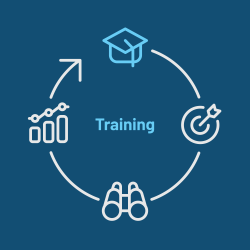 The annual required evaluation training is a key opportunity for professional learning. Rather than repeating the same “refresher” training each year, districts have the local flexibility to tailor annual evaluation training to address current and emerging needs. Thoughtfully designing the required training with input from all educators allows districts to situate the evaluation system within broader educational trends and align it with local initiatives and priorities largely based on the previous school year’s evaluation data. When these local adaptations are made intentionally, implementation tends to be more effective and seamless.
The annual required evaluation training is a key opportunity for professional learning. Rather than repeating the same “refresher” training each year, districts have the local flexibility to tailor annual evaluation training to address current and emerging needs. Thoughtfully designing the required training with input from all educators allows districts to situate the evaluation system within broader educational trends and align it with local initiatives and priorities largely based on the previous school year’s evaluation data. When these local adaptations are made intentionally, implementation tends to be more effective and seamless.
| Position | Requirements | Flexibilities | Best Practices |
|---|---|---|---|
| Novice or new to the district teachers and administrators |
|
No set training model; Districts can tailor training based on their local context, instrument used, etc. |
|
| Nontenured (years 2-4) or tenured teachers and administrators |
|
No set training model; Districts can tailor training based on their local context, instrument used, etc. |
|
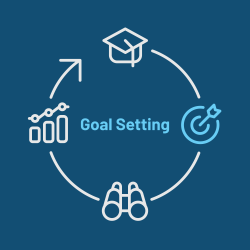 Each fall, the teacher and their supervisor should identify goals and priorities for the year. This conversation should identify which instrument domains will be prioritized during observations, as well as the teacher’s Professional Development Plan (PDP) goals and Student Growth Objectives (SGOs).
Each fall, the teacher and their supervisor should identify goals and priorities for the year. This conversation should identify which instrument domains will be prioritized during observations, as well as the teacher’s Professional Development Plan (PDP) goals and Student Growth Objectives (SGOs).
Professional Development Plan (PDP) Goals
PDP Development
Department regulations at N.J.A.C. 6A:9C-4.4(d)1 require teachers to develop one PDP goal “...derived from the results of observations and evidence accumulated through the teacher’s annual performance evaluation.”
Observation Domain Prioritization
A key strategy to maintain focus on maximizing opportunities for the teacher’s professional growth is to choose one or more “priority domains.” These are domains in the observation instrument most closely aligned to the teacher’s other professional goals. Prioritizing is accomplished by:
- Identifying Priorities:
- Identify instrument domains and/or indicators aligned to individual PDP goal(s).
- Identify other priority practice domains aligned to SGOs and/or other school and/or district priorities.
- In addition, for Highly Effective educators taking advantage of the Commissioner’s Highly Effective Option, PDP goals should determine which Commissioner-Approved Activity meets their needs. For more information on this process, see the section of guidance titled “Commissioner-Approved Highly Effective Educator Activities.”
- Evidence Collection:
- Identify and agree on potential sources of direct and indirect evidence for each identified priority.
- Direct evidence can be collected when the supervisor directly observes the teacher.
- Indirect evidence is gathered through artifacts and the actions reflecting the teacher’s breadth of assigned duties and responsibilities.
SGO Development
SGOs are academic goals that teachers and designated supervisors set for groups of students. These goals are supported by the SGO process. The most effective SGO process is:
- Organic, meaningful, and leverages authentic work already being used by educators on a daily basis.
- Aligned with school and/or district goals which support student growth.
- Streamlined and free of additional administrative burdens.
How Much Flexibility Does the SGO Process Allow?
SGO regulations have been established by the Department in N.J.A.C. 6A:10-4.2(a). The regulations allow individual districts and schools the flexibility to adapt SGOs to their unique instructional contexts.
Guiding Principles for Districts in Constructing SGOs Chart:
This chart identifies many common misconceptions and rigid practices that have emerged regarding SGO requirements and aims to reframe the SGO process and shift its focus back to its original goal of supporting the effective delivery of high-quality instructional practices to enhance student growth by providing:
- Best practices for creating instructional relevance in SGOs while meeting regulatory requirements; and
- Tips on common pitfalls to avoid which can sometimes create unnecessary burdens.
Additionally, exemplars of streamlined SGOs aligned to PDPs are provided in Appendix B.
Please note, due to Governor Murphy signing the law extending the pause of the collection of new SGO data for teachers for the 2025-2026 school year, the guidance below only pertains to nontenured teachers and teachers who elect to develop new SGOs. All other tenured teaching staff are not required to develop SGOs.
In conclusion, wherever possible, PDP and SGO goals as well as what is observed in classroom practice should reinforce each other and be aligned to standards, moving towards the overarching purpose of impacting student learning. For more information about various professional standards to which goals should be aligned, please refer to Appendix C.
| Category | Best Practices for SGOs | Practices to Avoid |
|---|---|---|
| Recordkeeping |
|
|
| Collaboration |
|
|
| Flexibility |
|
|
| Integrated with Instruction |
|
|
| Alignment with Goals |
|
|
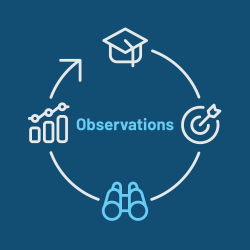 Observations are the nexus between educator evaluation and professional learning. The Department’s Educator Effectiveness regulations (N.J.A.C. 6A:10) define an “observation” as “a method of collecting data on the performance of a teaching staff member’s assigned duties and responsibilities.”
Observations are the nexus between educator evaluation and professional learning. The Department’s Educator Effectiveness regulations (N.J.A.C. 6A:10) define an “observation” as “a method of collecting data on the performance of a teaching staff member’s assigned duties and responsibilities.”
A teacher's most fundamental responsibility is the education of students during classroom instructional practice. Required observations should continue to be driven by direct observation of classroom instruction. However, the flexibility embedded within this definition allows for a fuller scope of the educator’s work to be acknowledged and celebrated through the evidence collected in the teacher practice component of the evaluation rubric.
The following table highlights requirements, allowable flexibilities within the code governing observations, and best practice recommendations in observing staff. The allowable flexibilities are a key component of taking advantage of the professional development opportunities found in the observation process.
| Observation Area | Requirements | Allowable Flexibilities | Best Practice Recommendations |
|---|---|---|---|
| Length of Observations | Observations must be at least 20 minutes in duration | Observations may be longer than 20 minutes | Remaining for an entire class period assists in collecting evidence |
| Number of Observations | Tenured educators must be observed at least twice, and nontenured educators must be observed at least three times Educators on Corrective Action Plans must have one additional observation Nontenured staff must be observed by multiple administrators over the course of the year and must be observed during both semesters | Additional observations are allowable Regulations allow districts to plan and schedule observations at any time during the academic year. Tenured staff may be observed by one or multiple observers | Additional observations can provide extra support for new/struggling teachers Providing ample time between observations will help the teacher show their professional growth |
| Conferences | Pre-observation conferences (required for announced observations only) must occur within 7 teaching staff member working days of the scheduled observation Post-observation conferences (required for every observation) must occur within 15 teaching staff member working days of the scheduled observation The individual conducting the observation must conduct the pre-observation (if required) and the post-observation conference | If agreed to by the teacher, one post-conference and any pre-conference may be conducted via written communication for tenured teachers not on a corrective action plan Face-to-face conferences may be conducted through video conferencing One post-observation conference may be combined with the annual summary conference | All conferences are conducted face-to-face Discuss PDPs during pre-observation conferences Focus conference discussions on evidence and observational priorities Schedule pre- and post-conferences as close to the day of the observation as possible to enhance evidence-based discussions |
| Evidence Collection | Regulations do not require evidence collection, but most educator practice instruments require artifacts or documentation logs | Districts can require evidence collection as part of their observation processes | Focus on evidence quality vs. quantity Use existing artifacts and resources instead of requiring extra evidence |
Tips on Including Non-Classroom Responsibilities in the Observation Process
All evaluation instruments encompass aspects of teaching and learning beyond lesson facilitation. In planning and implementing how to leverage artifacts representing non-classroom activities and responsibilities as part of observations, districts should unpack the educator practice instrument being utilized locally to determine which instrument indicators are not visible in the traditional classroom lesson (such as leading Professional Learning Community work). Please refer to Appendix D for a non-exhaustive list of example activities and potential pieces of evidence which could be used for this purpose.
Impermissible Flexibilities
Extra-curricular or co-curricular activities that are separately contracted or compensated through a stipend may be referenced in the evaluation as evidence of additional professional contributions. However, such activities shall not form the entire basis of the evaluation, which must be grounded in the educator’s primary responsibilities as outlined in their job description and in alignment with the implementation of the New Jersey Student Learning Standards.
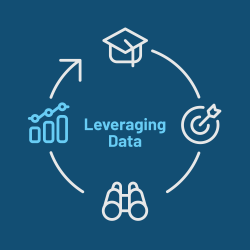 The TeachNJ Act states “The goal of this legislation is to raise student achievement by improving instruction through the adoption of evaluations that provide specific feedback to educators, inform the provision of aligned professional development, and inform personnel decisions.”
The TeachNJ Act states “The goal of this legislation is to raise student achievement by improving instruction through the adoption of evaluations that provide specific feedback to educators, inform the provision of aligned professional development, and inform personnel decisions.”
In essence, the collection of evaluation data is not meant to be treated as an end unto itself, rather one part of a process in which any evaluation data collected is leveraged to inform the professional development of each individual staff member as well as all staff members collectively.
- During a post observation conference, actionable, timely feedback targeted to the observation instrument can be a powerful professional development tool.
- Scoring methods used for observations can assist in identifying strengths and growth areas for the teacher.
Finally, prioritizing domains and customizing category weights to fit local context are useful strategies which can assist in directly targeting areas of growth for individual teachers, as well as for whole staff development.
| Tye of Data | Requirements | Key Flexibility | Best Practice Recommendations |
|---|---|---|---|
| Observation Feedback | The post-observation conference shall be for the purposes of reviewing the data collected at the observation, connecting the data to the practice instrument and individual professional development plan, collecting additional information needed for the evaluation, and offering areas to improve effectiveness. For teacher observations, within a school year, the post-observation conference shall be held prior to the occurrence of further observations for the purpose of evaluation | Districts locally have the flexibility to determine: The amount and type of feedback provided to educators Which priority areas of the evaluation instrument feedback will be addressed as long as it meets the intent of the rules | Ample time is provided between observations to allow teachers the opportunity to implement supervisor feedback Administrators review previous observation feedback as they prepare to observe a teacher |
| Evaluation Scores | The annual summative conference must be conducted by the educator’s designated supervisor A score between 1 and 4 must be provided if all data points are available, or given an NE if data points are not available | The calculation of a teacher’s final rating must be done in accordance with the specific evaluation procedures in place locally | Focus summative conference conversations on lessons learned from scoring data |
Keeping the above in mind, the table below is a non-exhaustive list of strategies designed to leverage data to inform professional learning.
| Data Source | Participating Educators | Strategies for Leveraging Data |
|---|---|---|
| Observation Feedback | Teacher and their Supervisor | Feedback from observations can be used to improve future lessons |
| Summative Conference Data | Teacher and their Supervisor | Results from performance data must be used to inform at least one PD goal. N.J.A.C. 6A:9C-4.4(d)1 |
| SGO Data | PLCs Teachers and Co-teachers Teachers and Supervisors | Identifying gaps between standards and the related curriculum and making appropriate adjustments |
| Aggregate Evaluation Data | School Improvement Panels (ScIPs) Administrators | Forming school and/or district PD plans or related trainings Determining annual evaluation training priorities |
Category Weights Domain Prioritization and Power Components
Leveraging the professional learning side of the observation process involves determining priorities. Districts have local flexibility to determine priorities on an individual teacher basis. This can be accomplished through prioritizing category weights in the local use of the observation instrument, as well as focusing on which power components within the instrument should be prioritized. The tables below utilize the Danielson framework to display an example that may be used in practice.
Category Weights
Within any of the evaluation instruments, domains can be weighted equally (as shown in Example 1) or not (as shown in Example 2). Example 2 illustrates a district’s decision to weight Danielson Domains 2 and 3 in recognition that these are observed during all traditional observations, while Domain 1 is typically only observed during the announced observation and Domain 4 is mostly evaluated at the annual summative conference.
| Domain 1 | Domain 2 | Domain 3 | Domain 4 |
|---|---|---|---|
| 25% | 25% | 25% | 25% |
| Domain 1 | Domain 2 | Domain 3 | Domain 4 |
|---|---|---|---|
| 20% | 30% | 30% | 20% |
Domain Prioritization and Power Components:
Districts may promote professional growth by prioritizing a small number of components of the evaluation tool. It is not typically possible or efficient to give a rating on every component of the rubric for every observation. Below is an example the “power components” from the Danielson Framework that a district might prioritize for an individual teacher observation.
Domain 1: Planning and Preparation
- 1e: Designing Coherent Instruction
Domain 2: The Classroom Environment
- 2a: Creating an Environment of Respect and Rapport
- 2b: Establishing a Culture For Learning
Domain 3: Instruction
- 3b: Using Questioning and Discussion Techniques
- 3c: Engaging Students in Learning
Domain 4: Professional Responsibilities
- 4a: Reflecting on Teaching
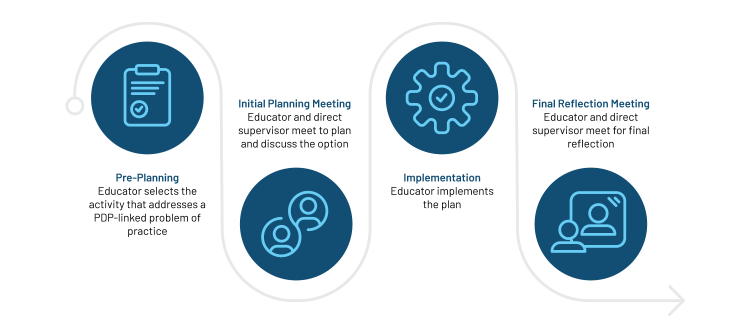
Educators may select one from the following six activities:
- Leading In-District Professional Development – Educators develop and facilitate professional learning experiences for colleagues, sharing expertise and contributing to a culture of continuous improvement within the district.
- Data Protocol – Educators engage in structured data analysis to reflect on student data and make data-driven decisions to improve student outcomes.
- Peer-to-Peer Protocol – Educators participate in structured peer observations, learning walks, or instructional rounds to foster reflection, exchange best practices, and enhance existing strategies.
- Action Research – Educators conduct targeted action research aligned with their professional development goals, implementing and assessing strategies for professional improvement.
- Digital Capture – Educators use video, audio, or digital transcription tools to record and analyze their professional practice, fostering self-assessment and professional growth.
- Reflective Practice Through Student Perspectives – Educators collect, analyze, and reflect on student feedback to refine professional practices.
 Official Site of The State of New Jersey
Official Site of The State of New Jersey
